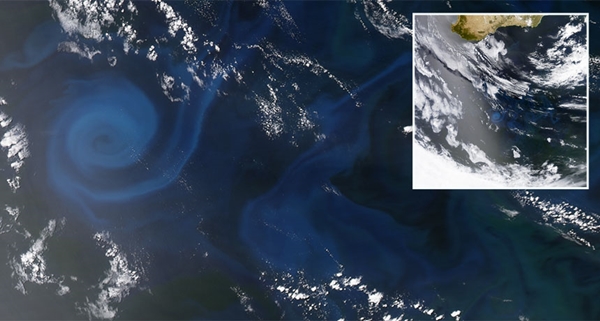
Maryland, US (BBN)-A rapid loss of phytoplankton threatens to turn the western Indian Ocean into an “ecological desert,” a new study warns.
The research reveals that phytoplankton populations in the region fell an alarming 30 percent over the last 16 years, reports Science News.
A decline in ocean mixing due to warming surface waters is to blame for that phytoplankton plummet, researchers propose online January 19 in Geophysical Research Letters.
The mixing of the ocean’s layers ferries phytoplankton nutrients from the ocean’s dark depths up into the sunlit layers that the mini plants inhabit.
The loss of these microbes, which form the foundation of the ocean food web, may undermine the region’s ecosystem, warns study co-author Raghu Murtugudde, an oceanographer at the University of Maryland in College Park.
“If you reduce the bottom of the food chain, it’s going to cascade,” Murtugudde says.
The phytoplankton decline may be partially responsible for a 50 to 90 percent decline in tuna catch rates over the last half-century in the Indian Ocean, he says.
“This is a wake-up call to look if similar things are happening elsewhere.”
In the 20th century, surface temperatures in the Indian Ocean rose about 50 percent more than the global average.
Previous investigations into this ocean warming’s impact on phytoplankton suggested that populations had increased. But those studies looked at only a few years of data — not long enough to clearly identify any long-term trend.
Roxy Mathew Koll, a climate scientist at the Indian Institute of Tropical Meteorology in Pune, Murtugudde and colleagues tracked the microscopic phytoplankton from space.
Phytoplankton, like land plants, are tinted green. When the sea surface is filled with phytoplankton, the water takes on a lighter, greener tinge.
As the phytoplankton population thins, the water turns darker and bluer.
Analyzing satellite images of ocean color collected over the last 16 years, the researchers found a 30 percent drop in the abundance of green-tinted microbes per cubic meter of water.
Combining this data with computer simulations of the Indian Ocean, the researchers reconstructed the ups and downs of phytoplankton in the region over the last six decades.
That work suggests that phytoplankton populations in the western Indian Ocean have declined 20 percent relative to 1950.
Warming surface temperatures resulted in the long-term drop in phytoplankton, the ocean simulations revealed. To survive, phytoplankton rely on nitrates produced by bacteria that dwell around 100 to 500 meters below the sea surface.
Those nitrates are churned upward by such forces as winds blowing over the ocean surface.
Warmer water is less dense and stays near the surface. As the sea surface becomes warmer relative to the deeper ocean due to climate change, the two layers become harder to mix and nutrients become scarcer in the sunlit top layer.
Upcoming ship-based studies should verify the new results, says Michael McPhaden, a physical oceanographer at the National Oceanic and Atmospheric Administration’s Pacific Marine Environmental Laboratory in Seattle.
Piracy off the coast of Somalia had up until recently prevented research vessels from studying parts of the western Indian Ocean, but this year marks the beginning of a five-year Indian Ocean expedition.
“This work includes logical leaps that are sensible to make based on what we know about how the system works, but you always want to go out and verify,” McPhaden says.
BBN/SS/ANS